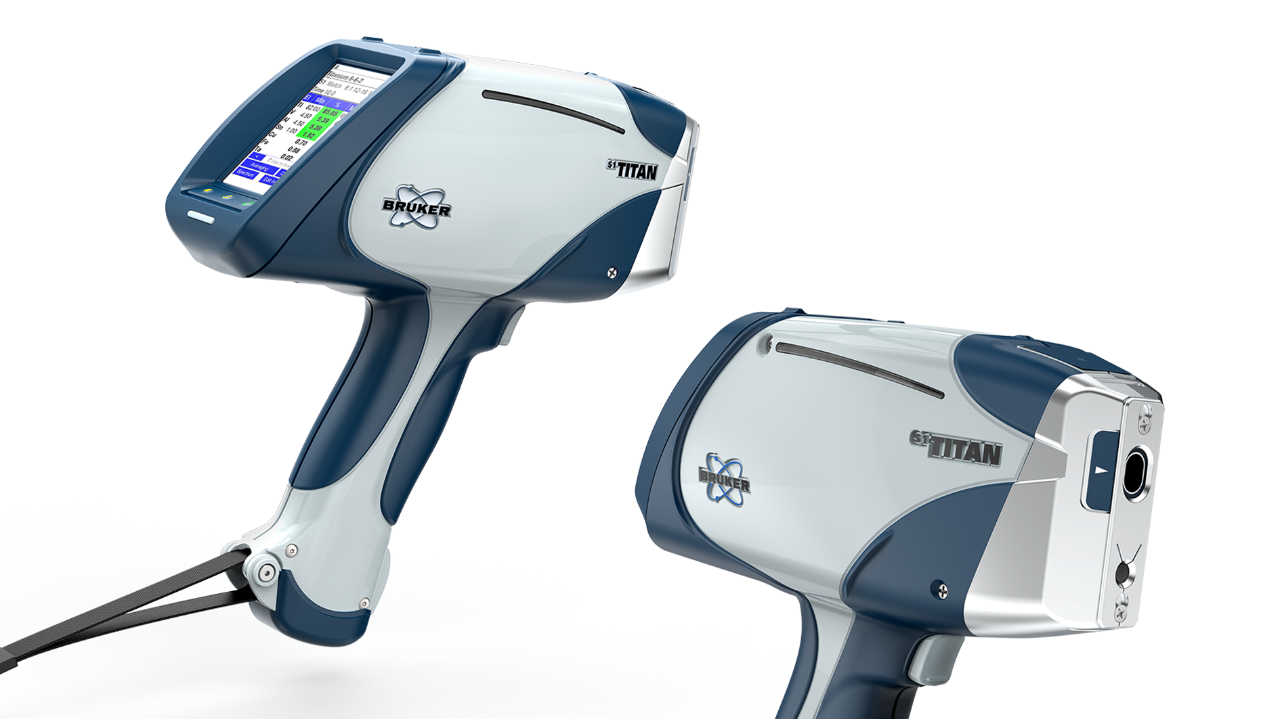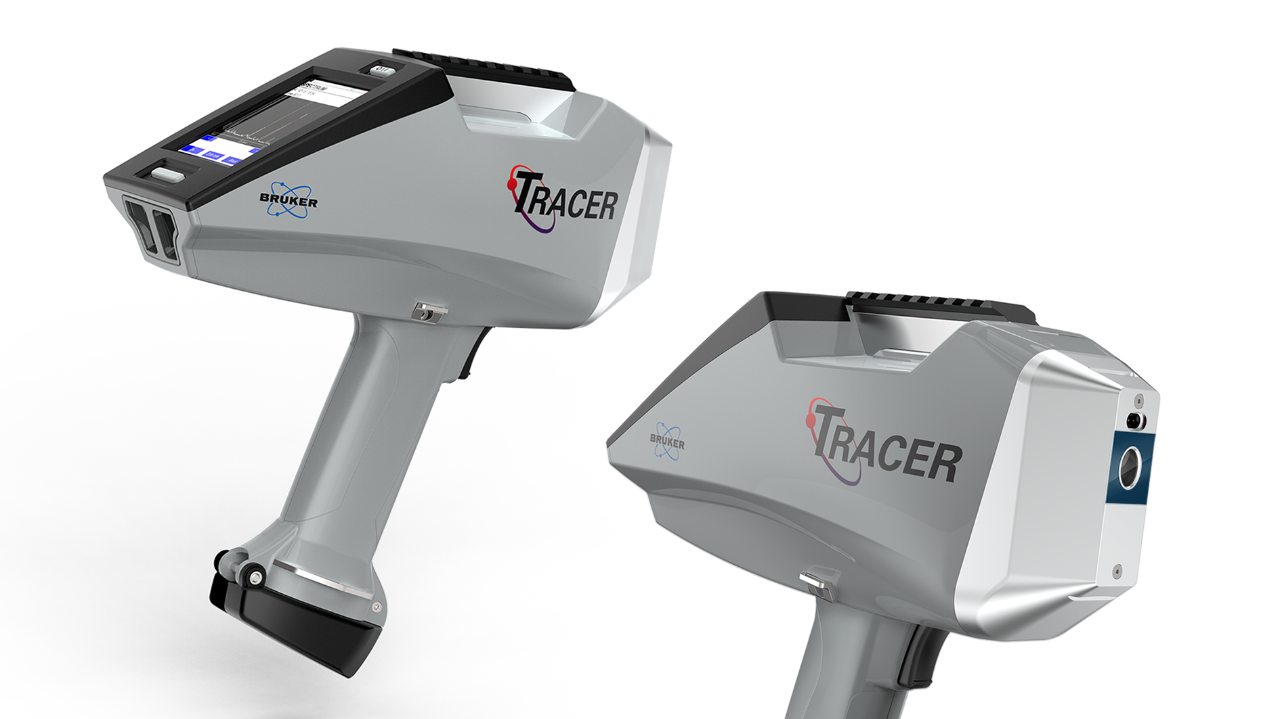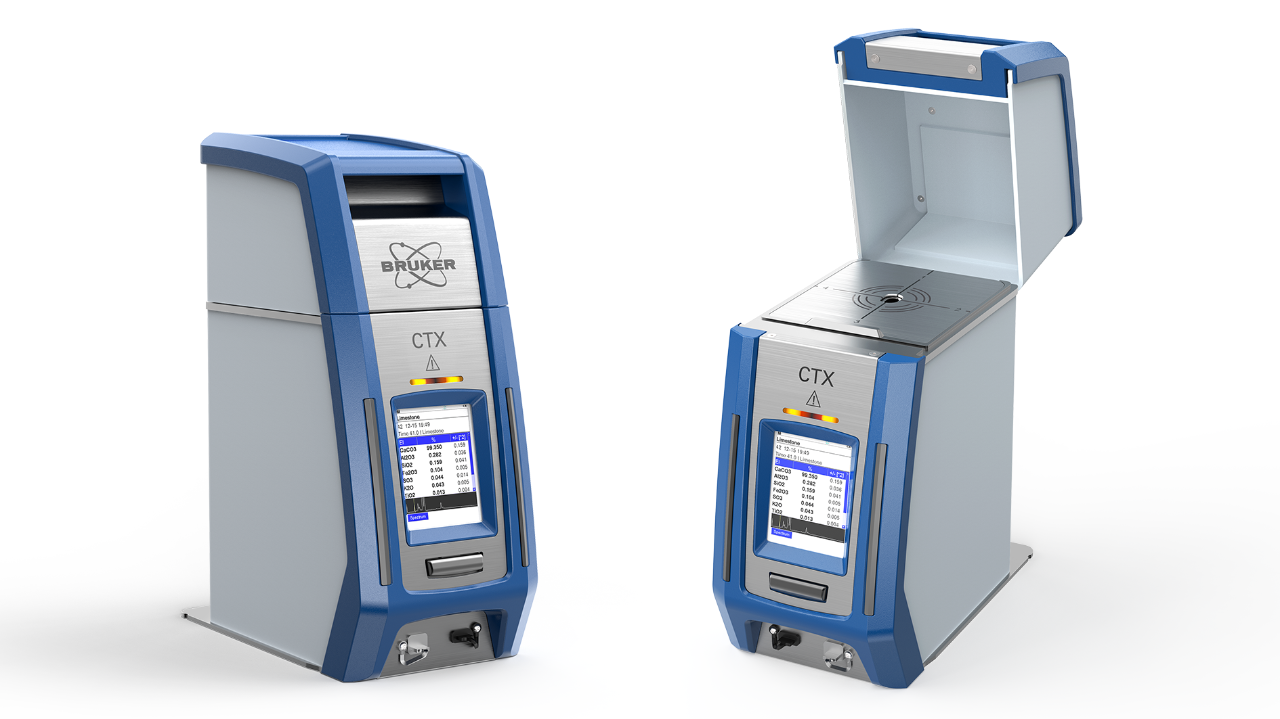X-Ray Fluorescence Spectrometer
What is an X-Ray Fluorescence Spectrometer?
An x-ray fluorescence spectrometer is an analytical chemistry instrument that determines each element present in a sample, as well as the quantity the elements present when applicable. A unique feature of x-ray fluorescence spectrometers is that the energy-dispersive type can be used non-destructively, making them appropriate for samples that need to be preserved or cannot be altered.
Bruker’s handheld x-ray fluorescence spectrometers offer several key benefits to the novice and advanced user:
- Determine the presence of elements from magnesium to uranium in a variety of sample types including metals, alloys, soil, ore, plastics, pigments, and many more
- Complete elemental analysis of most samples within a matter of seconds
- Handheld, ergonomic, fully portable design
- Near-laboratory accuracy and precision (based on sample type and sample preparation)
- Onboard alloy library for fast, accurate alloy grade identification
- 100% non-destructive analysis does not alter the sample in any way
How X-Ray Fluorescence Spectrometers Work
X-ray fluorescence spectrometry works by emitting an X-ray photon beam that is incident upon the atoms of the sample being analyzed. The interaction of the primary X-ray beam with the sample’s atoms excites the sample’s atoms’ electrons, causing some electrons to be knocked out of their orbits; this leaves a vacancy and causes a temporary state of instability in the atom. In order to correct this instability, electrons from higher energy orbits replace the displaced electrons. An energy that is specific to atoms of each element is released when the higher energy electrons replace the ones displaced by the primary X-ray beam. The emission of unique energies by atoms of various elements allows an X-ray fluorescence spectrometer to determine which elements are present in any given sample; the number of energies of each type detected provides quantitative information. For more detailed information regarding how x-ray fluorescence spectrometers work, see out step-by-step guide to how XRF works.
Bruker XRF devices boast a variety of industrial, research, and regulatory compliance applications, including:
- PMI (positive material identification)
- Gold and precious metals analysis
- Alloy grade identification
- Soil analysis
- Mine-face analysis
- Ore grade control
- Polymer analysis
- Lead and other toxic heavy metals analysis
- Pigment analysis
- Ceramic analysis
- Consumer product analysis
- Analysis for compliance with a variety of regulations, including:
- CPSIA
- CA Prop 65
- RoHS
- ASTM F963
- API RP 578
- Lead in Brass Plumbing Components Regulations
- ISO 9000
- Much more


